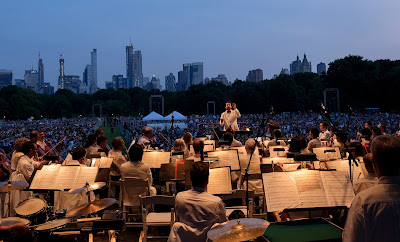 |
| Photo: Anthony Tommasini |
 |
| Photo: Caitlin Ochs for The New York Times |
Over my many years of reviewing, I’ve
often been asked for advice from newcomers to classical music, people
excited by what they’ve heard, and eager to hear — and to learn — more.
Naturally,
I urge those exploring classical music to find out whatever they can.
Yet I’ve found that many people assume that knowledge of the art form is
a prerequisite to appreciation. Newcomers to other performing arts,
like theater or dance, don’t seem to feel this level of intimidation.
I’d encourage those who are curious to just go to a performance and see
what they think. A symphony orchestra program — or an opera, or a piano
recital — is not an exam. It’s an escape, an adventure, an enrichment.
Still, let me offer a bit of advice, by answering some of the questions I’ve received.
What exactly is classical music, and what differentiates it from other musical genres?
Ah,
that inevitable question. Labels can be problematic in any field;
“classical music” especially so. One complication is that music history
refers to the years from roughly 1750 to 1825 as the “classical” period,
when Haydn, Mozart and Beethoven achieved their glory. But in a broader
sense the term classical music has been adopted as a way to describe
the continuing heritage of music mostly written to be performed in
concert halls and opera houses by orchestras, singers, choruses, chamber
ensembles and solo instrumentalists. Another characteristic is that
composers in this tradition have been drawn to larger, structured forms.
Still, the term is far from ideal, but no one has come up with a good
alternative — yet.
Classical music is available on CDs and streaming services. Isn’t that a great way to get to know this art?
Classical music is available on CDs and streaming services. Isn’t that a great way to get to know this art?
Recorded
music is widely accessible, and that’s an incredible resource. Still,
classical music is a performing art best experienced live. In our wired,
amplified world, concert halls and opera houses are essentially the
last places we can hear music in a natural acoustic, where we can savor
the richness of an orchestra’s string section or the ping of a tenor’s
voice. What really hooked me on this art form as a child was the
splendor of the sounds, from the sumptuous beauty of the soprano Renata Tebaldi’s soft, floating high tones
as Verdi’s Desdemona at the Metropolitan Opera, to the blazing sonic
inundation of Leonard Bernstein conducting Stravinsky’s “The Rite of
Spring” with the New York Philharmonic.
Read more...
Source: New York Times
Read more...
Source: New York Times










